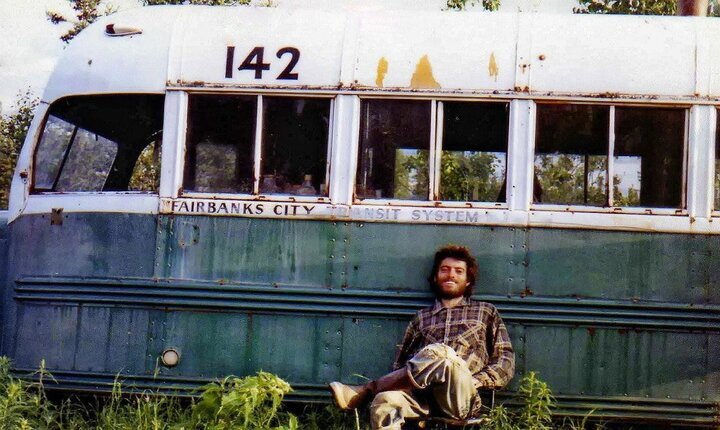Психология массовых коммуникаций - Ричард Харрис
Книгу Психология массовых коммуникаций - Ричард Харрис читаем онлайн бесплатно полную версию! Чтобы начать читать не надо регистрации. Напомним, что читать онлайн вы можете не только на компьютере, но и на андроид (Android), iPhone и iPad. Приятного чтения!
Шрифт:
Интервал:
Закладка:
Wallack, L. (1990). Improving health promotion: Media advocacy and social marketing approaches. In: C. Atkin L. Wallack (Eds.). Mass communication and public health (p. 147–163). Newbury Park, CA: Sage.
Wallack, L., Dorfman, L., Jernigan, D., Themba, M. (1993). Media advocacy andpublic health. Newbury Park, CA: Sage.
Walters, R. H., Willows, D. C. (1968). Imitative behavior of disturbed and nondisturbed children following exposure to aggressive and nonaggressive models. Child Development, 39, 79–89.
Wanta, W. (1997). The public and the national agenda: How people learn about important issues. Mahwah, NJ: Lawrence Eribaum Associates.
Ward, S., Wackman, D., Wartella, E. (1977). How children learn to buy: The development of consumer information-processing skills. Beverly Hills, CA: Sage.
Wartella, E. (1980). Individual differences in children's responses to television advertising. In: E. L. Palmer A. Dorr (Eds.). Children and the faces of television: Teaching, violence, and selling (p. 307–322). New York: Academic Press.
Wartella, E., Hcintz, K. E., Aidman, A. J., Mazzarella, S. R. (1990). Television and beyond: Children's video media in one community. Communication Research, 17. 45–64.
Waters, H. R, Huck, J. (1988. January 25). TV's new racial hue. Newsweek, 52–54.
Watkins, B. (1988). Children's representations of television and real-life stories. Communication Research, 15, 159–184.
Watkins, B. A., Huston-Stein, A., Wright. J. C. (1980). Effects of planned television programming. In: E. L. Palmer A. Dorr (Eds.). Children and the faces of television (p. 49–69), New York: Academic Press.
Watt. J. H., Mazza, M., Snyder. L. (1993). Agenda-setting effects of television news coverage and the effects delay curve. Communication Research, 20, 408–435.
Weaver, J. B. (1991). Responding to erotica: Perceptual processes and dispositional implications. In: J. Bryant D. Zillmann (Eds.). Responding to the screen (p. 329–354) Hillsdale, NJ: Lawrence Eribaum Associates.
Weaver, J. В ., Masland, J. L., Zillmann, D. (1984). Effects of erotica on young men's aesthetic perception of their female sexual partners. Perceptual and Motor Skills, 58, 929–930.
Weaver, J., Wakshlag, J. (1986). Perceived vulnerability to crime, criminal victimization experience, and television viewing. Journal of Broadcasting Electronic Media, 30, 141–158.
Webster, J. G., Wakshlag, J. (1985). Measuring exposure to television. In: D. Zillmann J. Bryant (Eds.). Selective exposure to communication (p. 35–62). Hillsdale, NJ: Lawrence Eribaum Associates.
Weigel, R. H., Loomis, J., Soja, M. (1980). Race relations on prime time television. Journal of Personality and Social Psychology. 39(5). 884–893.
Weimann, G., Brosius, H. B. (1991). The news-worthiness of international terrorism. Communication Research, 18, 333–354.
Weiss, A. J., Wilson, B. J. (1998). Children's cognitive and emotional responses to the portrayal of negative emotions in family-formatted situation comedies. Human Communication Research, 24, 584–609.
Wenner, L. A. (1989). The Super Bowl pregame show: Cultural fantasies and political subtext. In: L. A. Wenner (Ed.). Media, sports, society (p. 157–179). Newbury Park, CA:Sage.
Wenner, L. A., Gantz, W. (1989). The audience experience with sports on television. In: L. A, Wenner (Ed.). Media, sports, society (p. 241–269). Newbury Park, CA: Sage.
Wernick, R. (1996, August). Let's hear it for the lowly sound bite! Smithsonian, 27(5), 62–65.
Weston, M.A. (1996). Native Americans in the news: Images of Indians in the twentieth century press. West-port, CT: Greenwood.
Weymouth, L. (1981, January-February). Walter Cronkit remembers. Washington Journalism Review, p. 23.
Whannel, G. (1992). Fields in vision: Television sport and cultural transformation. London: Routledge. What's so funny? (1997, December 20). The Economist. (Reprinted in: World Press Review, March 1998, p. 18–19.)
What's up, doc? (1995, February 5). Manhattan Mercury, p. A7.
Whillock, R. K. (1997). Cyber-politics: The on-line strategies of '96. American Behavioral Scientist, 40, 1208–1225.
White, L. A. (1979). Erotica and aggression: The influence of sexual arousal, positive affect, and negative affect on aggressive behavior. Journal of Personality and Social Psychology, 37, 591–601.
Wilcox, B. L. (1987). Pornography, social science, and politics: When research and ideology collide. American Psychologist, 42, 941–943.
Wilhoit, G. C., de Bock, H. (1976). "All in the Family" in Holland. Journal of Communication, 26(1), 75–84.
Will, E. (1987). Women in media. The Other Side, 23(4). 44–46.
Williams, B. (1979, November). Report of the Departmental Committee on Obscenity and Film Censorship. London: Her Majesty's Stationery Office. Command 7772
Williams. F., Phillips, A., Lum, P. (1985). Gratifications associated with new communication technologies. In: K. Rosengren, L. Wenner, P. Palmgreen (Eds.). Mediagratifications research: New perspectives. Beverly Hills, CA: Sage.
Williams, F., Strover, S., Grant, A. E. (1994). Social aspects of new media technologies. In: J. Bryant and D. Zillmann (Eds.). Media effects: Advances in theory and research (p. 463–482). Hillsdale, NJ: Lawrence Eribaum Associates.
Williams, Т . М . (Ed.). (1986). The impact of television. Orlando, FL: Academic Press. Willwerth. J. (1993, February 15). It hurts like crazy. Time, 53.
Wilson, B. J. (1987). Reducing children's emotional reactions to mass media through rehearsed explanation and exposure to a replica of a fear object. Human Communication Research, 14, 3–26.
Wilson, B. J. (1989). Desensitizing children's emotional reactions to the mass media. Communication Research, 16, 723–745.
Wilson, B. J. (1991). Children's reactions to dreams conveyed in mass media programming. Communication Research, 18. 283–305.
Wilson, B. J., Cantor, J. (1987). Reducing fear reactions to mass media: Effects of visual exposure and verbal explanation. In: M. McLaughlin (Ed.). Communication yearbook 10 (p. 553–573). Newbury Park, CA: Sage.
Wilson, B. J., Hoffner, C., Cantor, J. (1987). Children's perceptions of the effectiveness of techniques to reduce fear from mass media. Journal of Applied Developmental Psychology, 8, 39–52.
Wilson, B. J., Linz, D., Donnerstein, E., Stipp, H. (1992). The impact of social issue television programming on attitudes toward rape. Human Communication Research, 19, 179–208.
Wilson, B. J., Weiss, A. J. (1993). The effects of sibling coviewing on preschoolers' reactions to a suspenseful movie sequence. Communication Research, 20, 214–248.
Прочитали книгу? Предлагаем вам поделится своим отзывом от прочитанного(прослушанного)! Ваш отзыв будет полезен читателям, которые еще только собираются познакомиться с произведением.
Уважаемые читатели, слушатели и просто посетители нашей библиотеки! Просим Вас придерживаться определенных правил при комментировании литературных произведений.
- 1. Просьба отказаться от дискриминационных высказываний. Мы защищаем право наших читателей свободно выражать свою точку зрения. Вместе с тем мы не терпим агрессии. На сайте запрещено оставлять комментарий, который содержит унизительные высказывания или призывы к насилию по отношению к отдельным лицам или группам людей на основании их расы, этнического происхождения, вероисповедания, недееспособности, пола, возраста, статуса ветерана, касты или сексуальной ориентации.
- 2. Просьба отказаться от оскорблений, угроз и запугиваний.
- 3. Просьба отказаться от нецензурной лексики.
- 4. Просьба вести себя максимально корректно как по отношению к авторам, так и по отношению к другим читателям и их комментариям.
Надеемся на Ваше понимание и благоразумие. С уважением, администратор knigkindom.ru.
Оставить комментарий
-
 Гость Наталья29 ноябрь 13:09
Отвратительное чтиво....
До последнего вздоха - Евгения Горская
Гость Наталья29 ноябрь 13:09
Отвратительное чтиво....
До последнего вздоха - Евгения Горская
-
 Верующий П.П.29 ноябрь 04:41
Верю - классика!...
Вижу сердцем - Александр Сергеевич Донских
Верующий П.П.29 ноябрь 04:41
Верю - классика!...
Вижу сердцем - Александр Сергеевич Донских
-
 Гость Татьяна28 ноябрь 12:45
Дочитала до конца. Детектив - да, но для детей. 20-летняя субтильная девица справилась с опытным мужиком, умеющим драться, да и...
Буратино в стране дураков - Антон Александров
Гость Татьяна28 ноябрь 12:45
Дочитала до конца. Детектив - да, но для детей. 20-летняя субтильная девица справилась с опытным мужиком, умеющим драться, да и...
Буратино в стране дураков - Антон Александров










